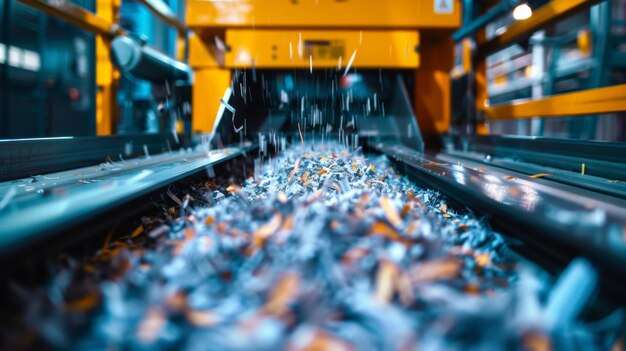Improving Metal Processing Efficiency with Advanced Steel Slitting Lines

In the competitive landscape of metal processing, achieving maximum efficiency while maintaining high-quality standards is essential. Steel slitting lines play a pivotal role in this endeavor, enabling manufacturers to transform large coils of steel into precise strips tailored to specific industrial applications. This article delves into the intricacies of advanced steel slitting lines, exploring their operational mechanics, applications, benefits, and future innovations that promise to enhance efficiency further
Understanding Steel Slitting Lines
The Basics of Steel Slitting
Steel slitting is a specialized process that involves cutting wide coils of steel into narrower strips. This operation is essential for various industries, including automotive, construction, and manufacturing. The slitting process employs circular blades or rotary knives to make longitudinal cuts, resulting in multiple strips that can vary in width according to precise specifications.
Components of a Steel Slitting Line
A typical steel slitting line consists of several key components:
- Uncoiler: This section feeds the coil into the slitting machine, ensuring that the steel is properly aligned for cutting.
- Slitting Head: Equipped with multiple circular blades, this component performs the actual slitting, creating the desired strip widths.
- Tension Control System: This ensures that the steel is held securely during the slitting process, maintaining uniformity and preventing defects.
- Rewinder: After slitting, the strips are rewound onto mandrels or recoilers for further processing or distribution.
The Importance of Precision in Slitting
Achieving Accurate Cuts
Precision is crucial in steel slitting, as even minor discrepancies can lead to significant waste and inefficiencies. Advanced slitting machines are designed to ensure that each strip meets exact specifications, minimizing material loss and maximizing productivity.
Quality Control Measures
To maintain high standards, manufacturers often implement rigorous quality control measures, including:
- Regular Calibration: Ensuring that the slitting blades are sharp and properly aligned.
- Inspection Protocols: Conducting regular visual inspections and using measurement tools to verify strip dimensions.
- Feedback Loops: Implementing systems to gather data on production quality for continuous improvement.
Optimizing Slitting Operations
Selecting the Right Equipment
Investing in the right machinery is fundamental to improving efficiency in steel slitting. Various options are available, each with its unique advantages:
- Laser Cutting Machines: Ideal for intricate designs and tight tolerances, offering high precision.
- Plasma Cutters: Suitable for thicker materials, providing rapid cutting speeds.
- Mechanical Shears: Cost-effective for straightforward cuts and large batches.
Fine-Tuning Operational Parameters
Adjusting key operational parameters can significantly enhance slitting efficiency:
- Slitting Speed: Finding the optimal speed for the material type and thickness can improve throughput without compromising quality.
- Blade Maintenance: Regularly checking and replacing blades prevents issues related to dullness, which can lead to poor cuts and increased waste.
Advanced Technologies in Steel Slitting
Automation and Robotics
The integration of automation into steel slitting lines has revolutionized the industry. Automated systems can streamline operations, reduce labor costs, and enhance precision. Robotics can handle repetitive tasks, allowing human operators to focus on more complex activities.
Real-Time Monitoring Systems
Implementing real-time monitoring systems allows manufacturers to track performance metrics and detect issues as they arise. This proactive approach helps maintain consistent quality and operational efficiency, reducing downtime and waste.
Applications of Steel Slitting Lines
Automotive Industry
Steel slitting lines are crucial in the automotive sector, where they produce narrow strips for components such as frames, panels, and reinforcements. The ability to customize strip widths ensures that manufacturers can meet specific design requirements efficiently.
Construction Sector
In construction, slitting lines provide materials for roofing, cladding, and structural components. The versatility of slitting technology allows for the rapid production of various steel products tailored to the needs of different projects.
Manufacturing and Fabrication
Steel slitting lines supply raw materials for appliances, machinery, and consumer goods. Their ability to produce high-quality strips in large quantities makes them indispensable in the manufacturing landscape.
Benefits of Advanced Steel Slitting Lines
Increased Production Throughput
One of the primary advantages of advanced steel slitting lines is their ability to enhance production throughput. By optimizing cutting processes and minimizing downtime, manufacturers can achieve higher output levels while maintaining quality.
Cost-Effectiveness
Efficient slitting operations lead to reduced material waste and lower operational costs. By investing in advanced machinery and optimizing processes, companies can improve their bottom line significantly.
Enhanced Quality Control
Modern slitting lines incorporate sophisticated quality control measures, ensuring that each strip meets stringent standards. This focus on quality not only reduces waste but also enhances customer satisfaction.
Challenges in Steel Slitting Operations
Material Variability
Variability in steel quality can pose challenges in the slitting process. Different grades and thicknesses may require adjustments in slitting parameters to maintain precision and quality.
Equipment Maintenance
Regular maintenance of slitting machinery is essential to prevent breakdowns and ensure consistent performance. Implementing a robust maintenance schedule can help mitigate these challenges.
Future Trends in Steel Slitting Technology
Eco-Friendly Practices
As sustainability becomes increasingly important, steel slitting operations are adopting eco-friendly practices. This includes optimizing energy consumption and minimizing waste through better material management.
Integration of AI and IoT
The future of steel slitting lines lies in the integration of artificial intelligence and the Internet of Things (IoT). These technologies can facilitate real-time data analysis, predictive maintenance, and enhanced operational efficiency.
Conclusion
The evolution of steel slitting lines represents a significant advancement in metal processing efficiency. By understanding the intricacies of slitting operations, investing in advanced technologies, and implementing best practices, manufacturers can achieve remarkable improvements in productivity, quality, and sustainability. As the industry continues to innovate, the role of steel slitting lines will only become more critical in meeting the demands of modern manufacturing and construction.
This article provides a comprehensive overview of advanced steel slitting lines, their applications, benefits, and future trends, ensuring a thorough understanding of their role in enhancing efficiency in metal processing.


